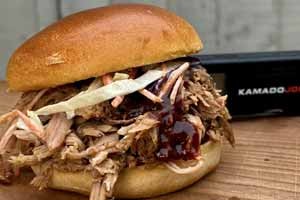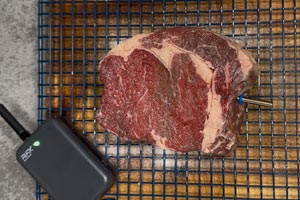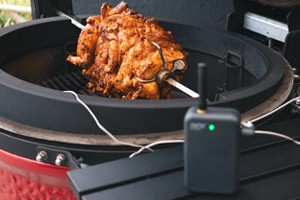Easy, tender BBQ pulled pork, loaded into buns with coleslaw and BBQ sauce.
BBQ Brisket Detroit Pizza
Detroit pizza is very unique. It is characterised by a crispy, crunchy cheese exterior but a soft, airy interior topped with cheese, sauce, and often pepperoni. It’s one of the most versatile styles of dough, and can be topped with absolutely anything, so whenever you cook up something fantastic like some beautiful smokey BBQ brisket, save a portion back for a decadent, crunchy slice of pizza heaven.
Ingredients
For the dough
*Makes 1 x 425g dough ball for an 8” x 10” Detroit pan. Ingredients are in baker’s percentages for scaling.
- 256 g strong bread flour (12.5g protein or above)
- 172g water (70%)
- 6.6g salt (2.7%)
- 1.5g fresh yeast (0.6%)
For the brisket topping
- 1 x 425g Detroit base
- 1 portion of sliced BBQ Brisket, I like to use the Smokin’ Elk’s recipe
- 150-200g shredded mozzarella
- 1 grating of hard cheese (parmesan or pecorino)
- A handful of pickled gherkins
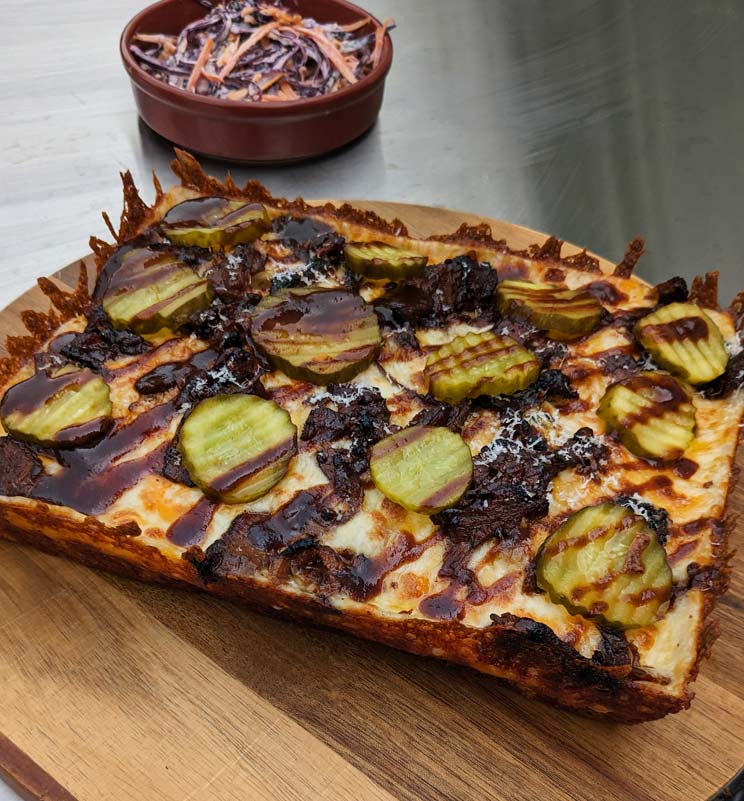
For the red cabbage slaw
- Half a red cabbage, finely sliced
- 1 large carrot, finely sliced
- 4 tbsp mayonnaise
- 50g red Leicester cheese, grated
- 2 tsp apple cider vinegar
- A pinch of salt
Directions
Method for the dough
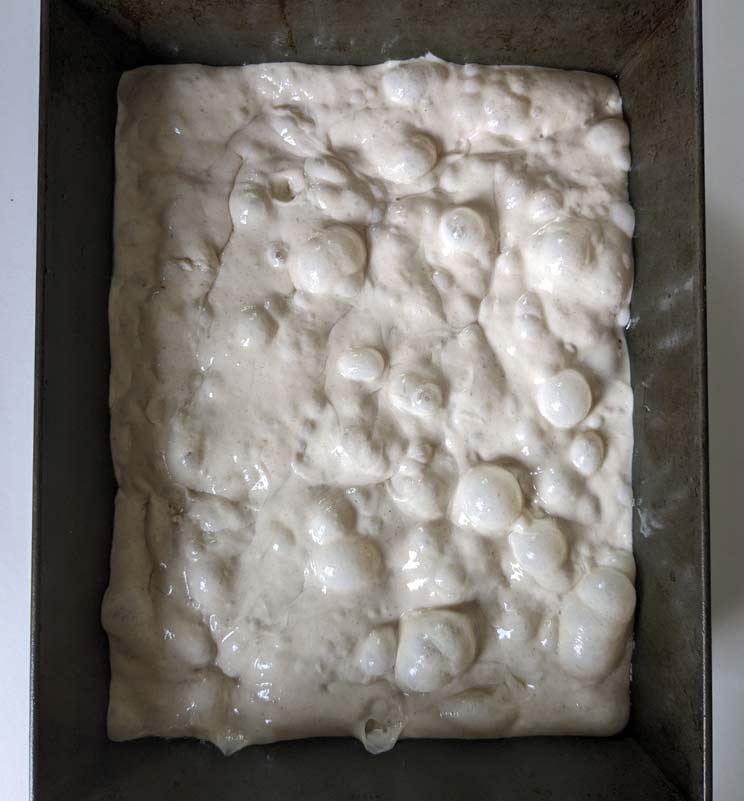
Mixing by hand
- Using a flour first method, crumble in the yeast.
- Add 90% of the water and combine until absorbed.
- Knead the dough for approximately 5 minutes, slowly adding the remaining water during the process.
- When only a little water remains, add the salt and the remaining water.
- Knead for a further 5 minutes.
- Cover and rest for 10-20 minutes.
- Knead for a further 10 minutes until smooth.
Mixing by machine
- Using a flour first method, crumble in the yeast.
- Add 90% of the water and combine until absorbed.
- Slowly add the remaining water. Once the dough reaches an internal temperature of around 18 °C, add the salt and any remaining water.
- Mix until an end temperature of 20-23 °C is archived, this should take around 10-15 minutes.
After mixing
- Place in a container and allow to ferment at room temperature for at least 12 hours, but up to 24 hours.
- Ball the dough into a 425g ball and place in an oiled Detroit pan.
- Allow the dough to relax and fill the pan.
- Once it’s relaxed, use wet hands to dimple the dough to help spread the dough and the air.
- Repeat the process again prior to baking.
- When around 24 hours total fermentation is achieved, and the dough fills the pan evenly, bake the dough at 300-350 °C for 5-8 minutes. Use a pizza oven thermometer to make sure your oven reaches the right temperature beforehand.
- At this point, the dough can either be topped and baked again, or cooled and frozen for later use.
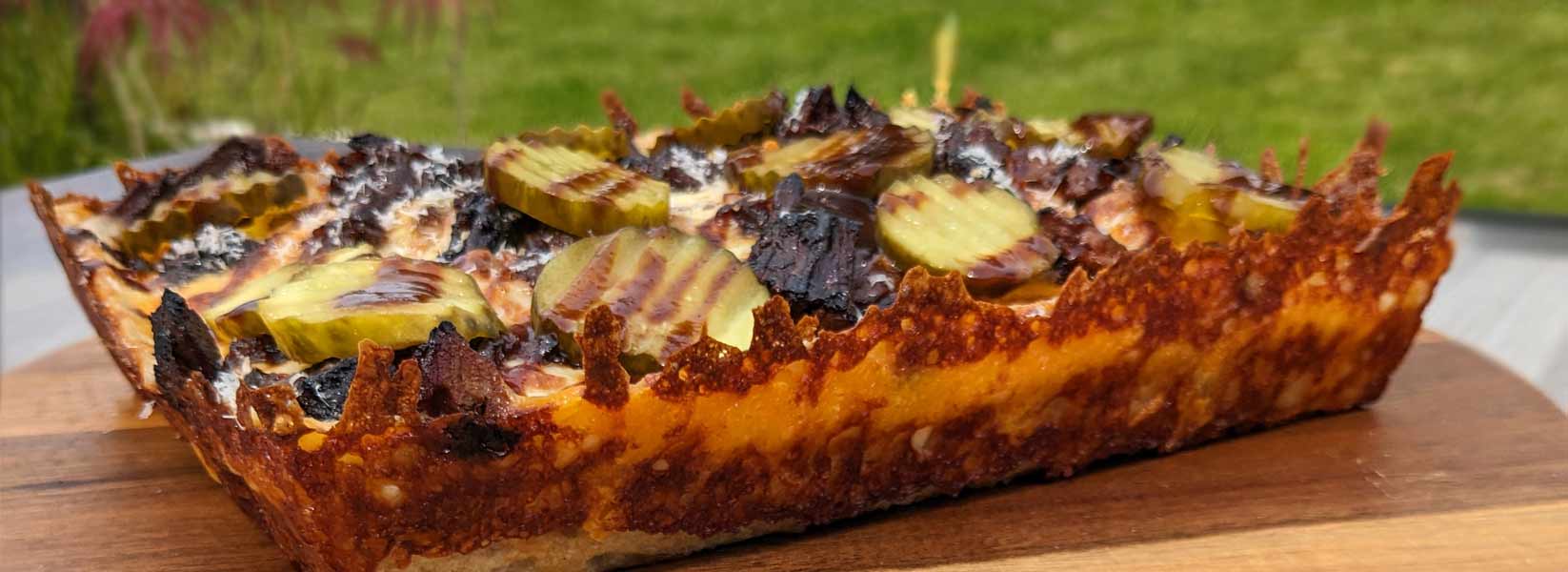
Method for the slaw
- Combine the sliced cabbage, carrot and grated cheese in a large bowl.
- In a separate bowl, mix the mayonnaise, apple cider vinegar and salt together.
- Add the dressing to the salad and combine well.
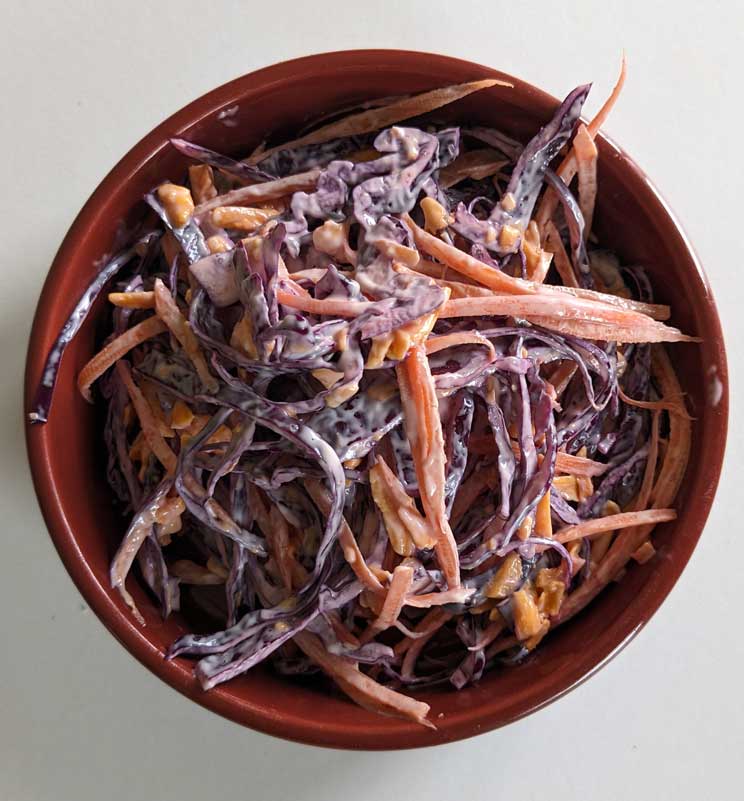
Method for the brisket topping
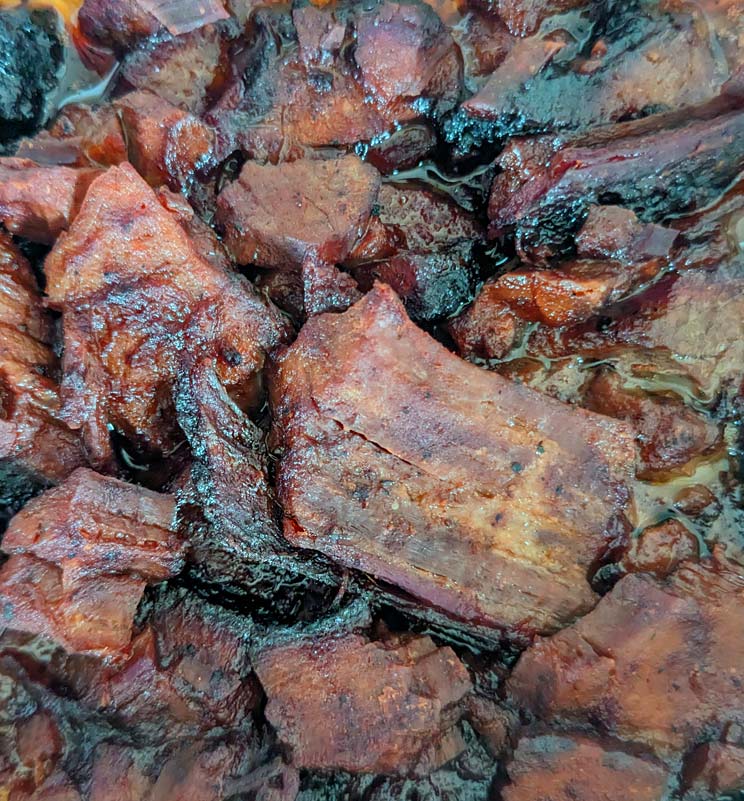
- Lightly oil a Detroit pan with extra virgin olive oil.
- Add the par-baked Detroit base.
- Top with shredded mozzarella, starting with the corners and edges, before topping the middle of the dough more lightly, this will ensure a better frico/ cheese crust.
- Generously spread the brisket across the top of the cheese.
- Bake at 350 °C until the cheese crust forms and caramelises around the outside of the pan. Depending on the toppings, this will take around 5-8 minutes (if you don’t have a pizza oven, use the grill on your home oven).
- Remove the pizza from the oven and allow it to cool for a minute. Using a flat scraper, separate the frico/crust from the pan and allow it to cool for another minute.
- Using a pizza pan spatula, remove the pizza and place onto a rack to allow steam to escape from the bottom.
- Grate the hard cheese generously on top of the pizza, drizzle over with your favourite BBQ sauce, and add the pickled gherkins for some extra crunch and acidity.
- Transfer to a serving board, and dice the pizza into slices with a pizza rocker.
- Serve with the red cabbage slaw, if you like.
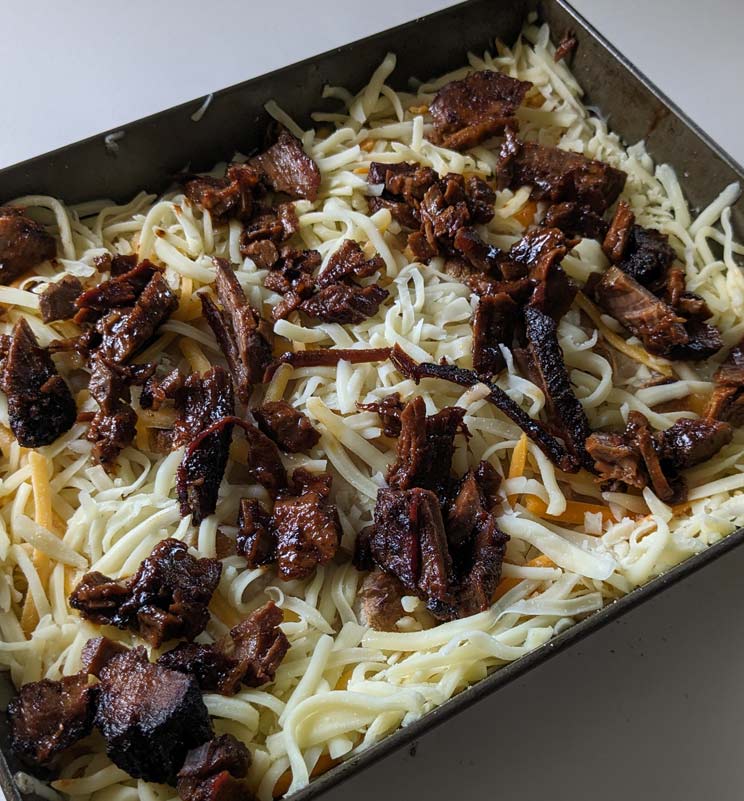
Notes on dough temperatures
What is DDT/FDT?
The baking world is full of jargon, and when you’re starting out it can be really difficult to get your head around the different terminology.
In a nutshell, DDT/FDT (desired dough temperature and final dough temperature) is a simple formula that helps you find the perfect temperature for your ingredients, which in turn should give you the right conditions for a well-fermented dough.
Why do we do this?
Bakers have found that the optimum temperature for dough to start its fermentation is around 23 °C/ 74 °F. This means that the yeasts and bacteria within the dough get a head start in their fermentation and enzymatic processes, which results in a well-fermented dough.
If your dough is too cold, it will be stiff and hard to work, and the fermentation will take a lot longer. Conversely, if it’s too hot, it’ll be sticky and could overferment. Which means we really want to shoot for this magic number where possible.
Now, this might seem like a lot of effort, but in fact, it’s really easy to work out, and will help you get the perfect dough!
How do I work it out?
If you’re anything like me, you probably don’t like maths, and seeing a load of numbers and equations introduced to your baking is probably not something you’re interested in, but good news, this is super simple!
To work out our DDT/FDT, we start backwards. First, we take our magic number, 23 °C, and multiply it by 3. Then we measure our air temperature, and the temperature of our flour using a Thermapen.
Once we have those numbers, we need one more number, the friction factor. Although this might sound like a 1980s game show, it’s actually the term for the heat generated whilst the dough is kneaded. If you’re using a spiral mixer, this is probably about 11 °C during a 15-minute mix, by hand it’s around 6 °C.
Now we take all these numbers and subtract them from our DDT/FDT, and we’ll get our required water temperature.
Now we take all these numbers and subtract them from our DDT/FDT, and we’ll get our required water temperature.
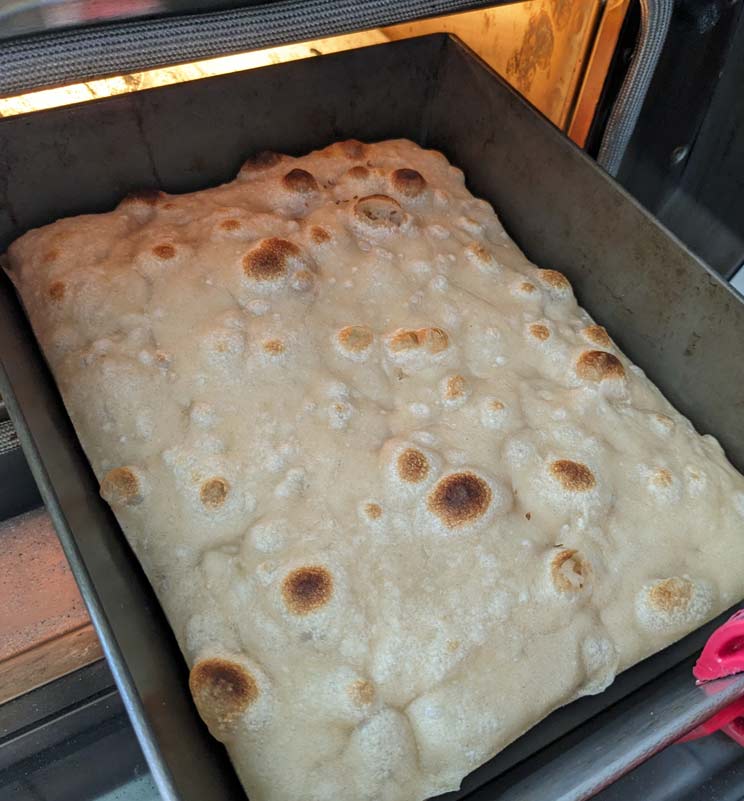
The formula
The formula The formula for this is (DDT/FDT x 3) - Room Temperature - Flour Temperature - Friction Factor
= Water temperature. So in the example below, 69 - 20 - 20 - 11 = 18
The friction factor depends on the heat generated by your mixer. Likewise, if you’re a vigorous kneader, you’ll generate more friction. But after taking a reading with your Thermapen when you do your first batch of dough after following this formula, you should be able to tweak the numbers to make them more accurate.
Generally speaking, you're going to want to use colder water in summer and warmer water in winter.
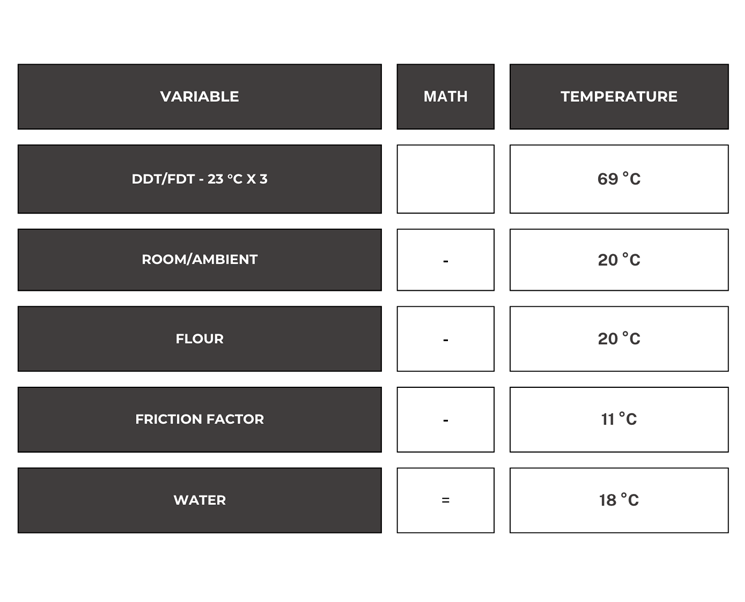
"Thermapen has been a game changer for me, something I picked up to aid in my pizza journey has become one of my most used kitchen tools. Being able to take instant, accurate temperature readings has let me take all my cooking to the next level. what I love about the Thermapen is how it empowers me to take control of my cooking, giving me the ability to achieve perfect results with ease, whether I'm grilling, roasting, or baking, taking every meal up a notch."






